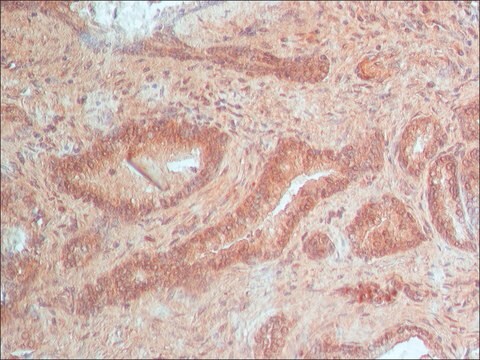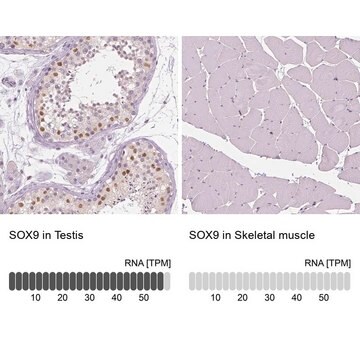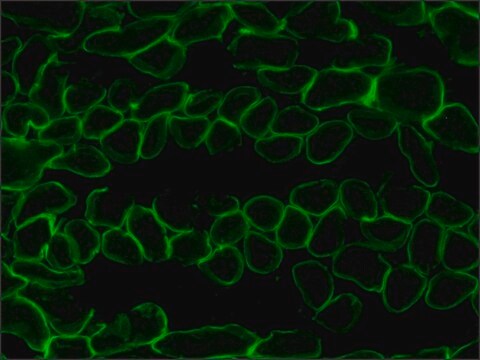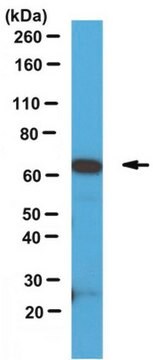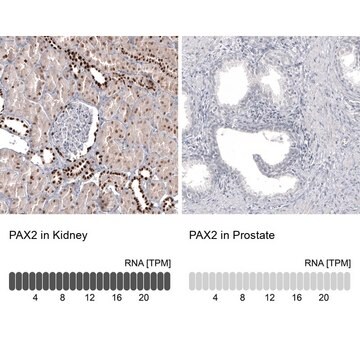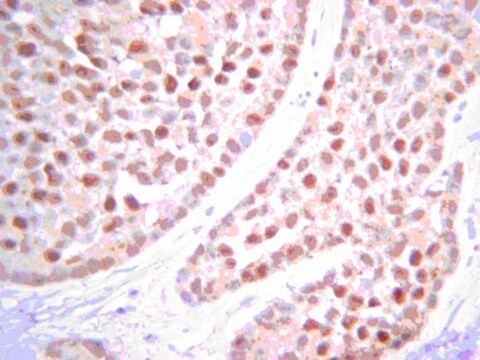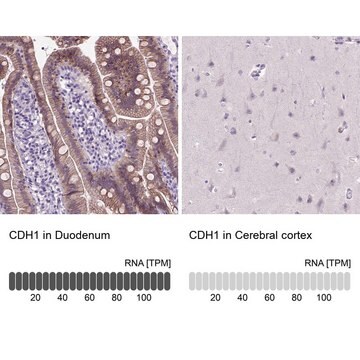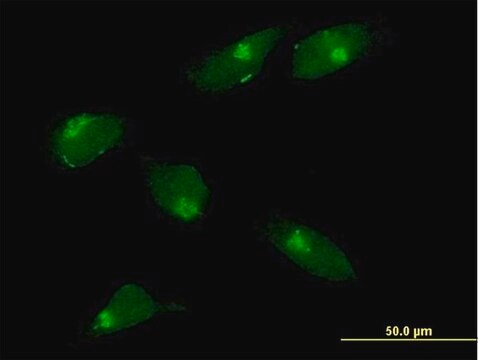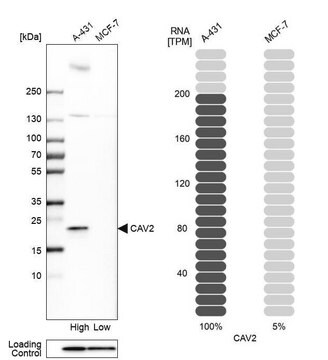MAB4037
Anti-PTEN Antibody, CT, clone A2b1
clone A2b1, Chemicon®, from mouse
Synonym(e):
MMAC1, TEP1
About This Item
Empfohlene Produkte
Biologische Quelle
mouse
Qualitätsniveau
Antikörperform
purified immunoglobulin
Antikörper-Produkttyp
primary antibodies
Klon
A2b1, monoclonal
Speziesreaktivität
human, rat, mouse
Hersteller/Markenname
Chemicon®
Methode(n)
immunocytochemistry: suitable
immunohistochemistry: suitable
immunoprecipitation (IP): suitable
western blot: suitable
Isotyp
IgG1
Eignung
not suitable for immunohistochemistry (Paraffin)
NCBI-Hinterlegungsnummer
UniProt-Hinterlegungsnummer
Versandbedingung
wet ice
Posttranslationale Modifikation Target
unmodified
Angaben zum Gen
human ... PTEN(5728) , TEP1(7011)
Spezifität
*PTEN is covered under U.S. patents 6,262,242, 6,482,795 and U.S. patent application 10/299,003.
Immunogen
Anwendung
Zelluläre Signaltransduktion
PI3K-, Akt-, & mTOR-Signalübertragung
Immunocytochemistry
Immunohistochemistry: 1:20 to 1:50 for acetone-fixed, fresh frozen tissue. Not effective for paraffin sections.
Immunoprecipitation 1:10 to 1:20
Protocol for immunohistochemistry of frozen tissue sections on glass slides.
1. Fix sections for 5 minutes with cold acetone.
2. Air dry
3. Wash sections with PBS
4. Add blocking solution (horse serum) for 20 minutes
5. Add diluted PTEN antibody and incubate for 1 hour at room temperature.
6. Wash with PBS
7. Add biotinylated secondary antibody (horse anti-mouse, or equivalent).
8. Incubate for 30 minutes at room temperature.
9. Wash with PBS
10. Detect with ABC (Avidin-Peroxidase-Complex) or equivalent.
11. Wash with PBS
12. Develop with DAB substrate.
13. Hematoxylin dye may be used as a counterstain for visualizing nuclei.Breast tumor tissue gives good staining. Prostate tissue does not stain.Optimal working dilutions must be determined by end user.
Zielbeschreibung
Verlinkung
Physikalische Form
Lagerung und Haltbarkeit
Hinweis zur Analyse
Breast tumor tissue
Purified active kinase is Catalogue Number 14-488
Sonstige Hinweise
Rechtliche Hinweise
Haftungsausschluss
Sie haben nicht das passende Produkt gefunden?
Probieren Sie unser Produkt-Auswahlhilfe. aus.
Empfehlung
Lagerklassenschlüssel
10 - Combustible liquids
WGK
WGK 2
Flammpunkt (°F)
Not applicable
Flammpunkt (°C)
Not applicable
Analysenzertifikate (COA)
Suchen Sie nach Analysenzertifikate (COA), indem Sie die Lot-/Chargennummer des Produkts eingeben. Lot- und Chargennummern sind auf dem Produktetikett hinter den Wörtern ‘Lot’ oder ‘Batch’ (Lot oder Charge) zu finden.
Besitzen Sie dieses Produkt bereits?
In der Dokumentenbibliothek finden Sie die Dokumentation zu den Produkten, die Sie kürzlich erworben haben.
Unser Team von Wissenschaftlern verfügt über Erfahrung in allen Forschungsbereichen einschließlich Life Science, Materialwissenschaften, chemischer Synthese, Chromatographie, Analytik und vielen mehr..
Setzen Sie sich mit dem technischen Dienst in Verbindung.